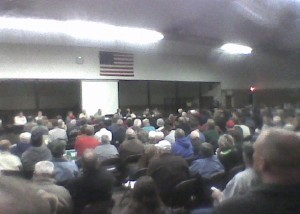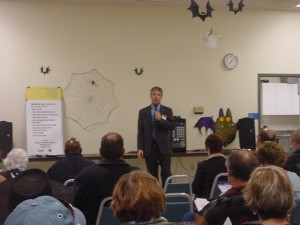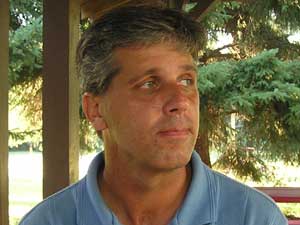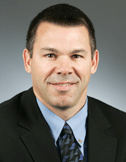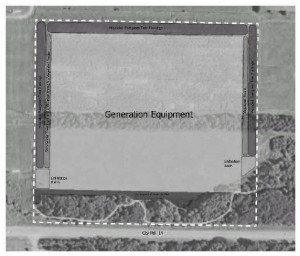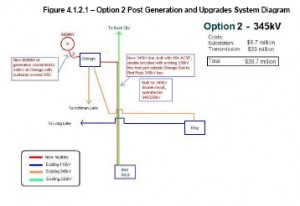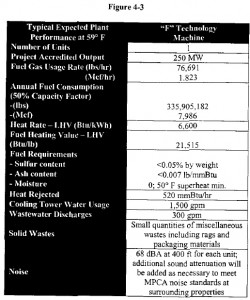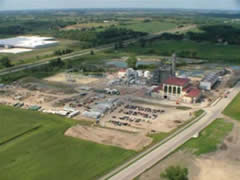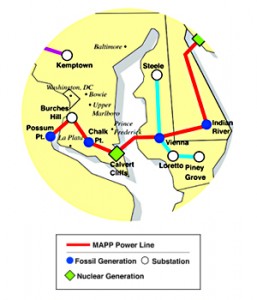LS Power’s Sunrise River Energy in the news
November 2nd, 2009
Oct 19 Chisago County meeting re: LS Power Sunrise River Energy Station
How odd… it’s in both STrib and StPPP today… so comment opportunities abound!
Here’s the story from Dennis Lien:
Skeptics question Chisago power plant
Residents fear water pollution, say plans are too vague
By Dennis Lien
Updated: 11/01/2009 11:22:19 PM CSTBut critics have other concerns about what could be the largest natural-gas plant in the state.
And from the STrib’s Tom Meersman:
Protected aquifer feared at risk
It’s about appropriate land use
It can’t be used for industrial purposes in the seven-county metro area.
Others expressed doubts about the company’s change of mind on groundwater use.
Rob Kravitz lives about 2 miles from the site and opposes the plant, period.
Last night in Mazeppa
October 28th, 2009
Last night, Rep. Steve Drazkowski and Rep. Tim Kelly (who wasn’t there!) hosted a meeting about CapX 2o2o.
But Rep. Randy Demmer, 29A was.
As one person said, he had a “deer in the headlights” look as he sat in the front of the room. Did he have any idea what he’d be in for? I’d talked with him a bit when he came in, and he said he hadn’t heard from many constituents about CapX… oh… OK, well, we can do something about that! And it’s good he showed up to find out what was going on and hear the word on the streets and in the fields.
Short version of the meeting:
- Bill Glahn gets roasted for MOES “Minnesota_Resource_Assessment” report, which is utter crap, the report, that is… the roasting was well-deserved.
- PUC, Commerce, and DOT show up en mass and toady for process and project.
- Rep. Drazkowski utters words of placation, but did not promote Nov. 4 joint committee hearing on repeal of Minn. Stat. 117.19. HE’S ON ONE OF THE COMMITTEES, EARTH TO MARS!!!
- Affected landowners don’t buy it, they get that fundamentally CapX 2020 is not needed and are pissed-off at the crap (see above).
- CapX said they were not going through or around Rochester.
There were two things I let slide, can’t take on everything:
1.Their statements about Big Stone were odd, theywell knows that Big Stone could not interconnect without CapX, and I have the electrical studies which prove it, which after trying 5 times to make it work with a line to nowhere (Granite Falls) then assumed CapX in try #6… But I also wonder whether CapX Brookings (hence all of CapX) can go forward without Big Stone.
2. They kept saying “this is all about local load” and denying the LaX to Mad line, and kept talking about Rochester as the driver, yet they did not note, of course, the new gas plant at West Side sub or the four 161kV lines that are planned.
Overland’s Scorecard (concept stolen from Deb!):
CapX: 0
PUC: -5
DOT: 1
Commerce: -4
The People: +1
Longer version, bigger photo:
The people did a good job of expressing their displeasure and disbelief.
Bill Glahn brought up the Minnesota Resource Assessment Survey! Bad move… He got one of my awards for that Minnesota Resource Assessment Survey, and here’s Maccabee – Presentation to LEC 10/23/09 , another voice saying it’s outrageous. Last night Alan Muller got him good about it, told him” it was an unsatisfactory report, basically just a regurgitation of the business plans of MN… no independent thinking and not in the interests of the citizens of Minnesota …” Alan does have a way with words. When asked for a response Glahn looked abashed and admitted that he knows many people are unhappy with it. AS WELL HE SHOULD! I mean really… to use as an example that phony “chart” of Steve Rakow’s on p. 6:
… with no ID of meaning of X or Y axis, it’s deceitful, but they pulled that in CapX when faced with decreased demand, entering this chart, then citing its entry in the CapX 2020 Certificate of need record as if it means something. Oh, pleeeeeeeeze… We’re way below the 2004 actuals, and this forecast, for the Blue Lake expansion, it’s CapX 2020 era forecasts, we’re about 1,500MW down and growing, down 15% so far, down 2.5% in 1&2Q 2009, SEC 3Q filing and investor call due any second now will take it down further:
After last night’s meeting, Bill Glahn is certainly under fire, but I also got the feeling due to the cadre of state employees stumping for CapX, that it’s their perception that it’s in trouble. It could be something as simple as they have no financing to do it, that demand is so far down that it makes no sense even to PUC and applicants to build it, or … The DOT was distancing itself, there’s been a lot of pressure on DOT. The DOT has its “Policy of Accomodation” (at issue in Chisago Transmission Project III, or IV, the last round, where Xcel stuck poles, BIG poles, right in the middle of the new plan for US Hwy. 8, in one example, right next to and over a business), and here it is:
…and I don’t think they’re going to change that anytime soon. At the Legislative Energy Commission meeting in September, there was mention of an October 13 meeting with the DOT, but Dave Sykora, DOT, mentioned that was cancelled, and instead they met last week. There were no specifics disclosed, but the feeling I got from what was said was that it didn’t go the way legislators wanted it to, DOT didn’t cave. Legislators are looking, from Rep. Drazkowski’s statements last night, and from Rep. Westrom’s comments at the LEC meeting, for a way to do the project with minimal landowner pain. I don’t think that’s doable, and it’s sure not desirable. CapX 2020 is a project that shouldn’t be built, and if it is, it will cause considerable pain, for landowners, applicants and legislators!
Also noteworthy last night was the general failure to accept “need” and a high level of understanding, and for the most part, people are getting the broader picture. (there was an odd comment by Burl Haar that if there were questions about the appeal of the CapX decision, that they post most things on the docket, and to check with him!). So is the PUC’s argument that this belongs at the District Court, and not the Appellate Court (despite what Cupit says) on display in the docket for the world to see? I doubt it, but I’ll check.
Last night, Drazkowski kept referring to efforts to alter the eminent domain law, but he was evasive and didn’t disclose important info, like the upcoming November 4 hearing before Energy & Civil Justice (he’s on Civil Justice!) (Upcoming hearing on repeal of eminent domain exemptions), and he didn’t advise on how to advocate for change, dropped the ball, wouldn’t even pick it up.
Here’s the info on the hearing:
WEDNESDAY, November 4, 2009
10:00 AM
Joint Meeting of the Energy Finance & Policy Division and Civil Justice Committee
Room: 5 State Office Building
Chairs: Rep. Bill Hilty, Rep. Joe Mullery
Agenda: Informational hearing on HF1182 (Bly) Public service corporation exemptions repealed.
Anyone wishing to testify should contact Andy Pomroy at andy.pomroy [at] house.mn
Last night’s meeting in Mazeppa on CapX 2020 follows on the heels of one last Monday night in Chisago, about an 855MW gas plant proposed by LS Power, the Sunrise River Energy Station. Click here for Report on Monday Chisago meeting. They’ve proposed at least three gas plants before at that site, and they didn’t go far, this is the biggest, and most public, and will need mega transmission, BUT LS Power’s Blake Wheatley admitted at the Chisago meeting that they don’t have a plan, don’t have a PPA, don’t have anything but a tax exemption (est. $9-10 million) from legislators who should have known better than to sell out their constituents for nothing, and then after being caught, for a very small “Host Fee.” At that meeting, Mike Bull said Xcel won’t need any power for a long time, 2016-2017 (and if he’ll admit that at long last, we know it’s really a lot further out). As with last night’s meeting, at the Chisago meeting there was, despite heavy lobbying and presence of unions like IBEW and Building & Trades, a clear understanding that the LS Power plant is not needed, and that peak demand is down. Granted LS Power made the mistake of walking into an energy educated community, but even Bob Cupit was surpirsed by the turnout, said he’d never seen such a large crowd, ~500, standing room only in a hockey rink sized room (Also, FYI, Bob stated to the audience that “If citizens feel the system still failed to consider issues, the decision of the PUC can be appealed to the state Court of Appeals.“)
There is a theme. Minnesota doesn’t need more transmission, and we won’t, in the words of Xcel’s Mikey Bull, need an generation anytime soon. Am I paraphrasing correctly, Mike? (Duck & cover — the You Tube of that is forthcoming!!!) The MOES Minnesota_Resource_Assessment is a crock.
Here are the LEC members — it’d be good to contact all of them, and let them know what you think about “need” for generation and transmission, decreasing demand, and CapX 2020 in particular:
http://www.commissions.leg.state.mn.us/lec/members.htm
Here’s Senate member info:
http://www.senate.leg.state.mn.us/members/index.php?ls=#header
Here’s House member info:
http://www.house.leg.state.mn.us/members/hmem.asp
And about CapX and eminent domain, contact:
rep.steve.drazkowski [at] house.mn
rep.tim.kelly [at] house.mn
rep. randy.demmer [at] house.mn
Once more with feeling — Get thee to the House Energy and Judiciary Committee meeting:
WEDNESDAY, November 4, 2009
10:00 AM
Joint Meeting of the Energy Finance & Policy Division and Civil Justice Committee
Room: 5 State Office Building
Chairs: Rep. Bill Hilty, Rep. Joe Mullery
Agenda: Informational hearing on HF1182 (Bly) Public service corporation exemptions repealed.
500+ give LS Power a piece of their mind
October 20th, 2009
XCEL DOESN’T NEED OR WANT MORE ELECTRICITY, XCEL DOESN’T WANT A POWER PURCHASE AGREEMENT WITH LS POWER, SUNRISE ENERGY, OR WHOEVER…
That was the most important thing to come out of last night’s meeting. Mikey Bull was clear, stating in a most Norwegian way that “despite what Carol thinks, our load is growing,” and that they “won’t have a need… until 2016 or 2017.” I hope that people LISTENED CAREFULLY and were thinking critically.
Shellene Johnson, CRVC, walked Bob Cupit through the siting review and permitting options:
Bob was thrilled, I’m sure, he thought I’d put her up to it, but hey, I’m innocent — this is info that needs to be public, so that people understand all the options. Shellene had questions, particularly where this was an issue that had come up way back when we worked on the County Essential Services ordinance, and wanted to beef up the county’s ordinance to give them some options if a project went through local review. Local review is NOT a new issue for Chisago County, and if you recall, the SE Metro line went through the local review process.
Alan Muller was his usual delightful self, leading Blake Wheatley through a list of questions that demonstrated the “vaporware” nature of this project — he couldn’t or wouldn’t give us any information at all about the project. He knew NOTINK!
What would be the output of this plant? Answer:
780 MW summer rating. Over 800 winter rating. [Gas turbines
make more power when the air is colder and more dense.]How many generating units would there
be?
Answer: Don’t
know/haven’t decided.Who would be the manufacturer of the combustion
turbines? Answer:
Don’t know/haven’t decided.Who would be the manufacturer of the steam
turbines? Answer: Don’t
know/haven’t decided.How many smokestacks would the plant have?
Answer: Don’t know/haven’t
decided.How gallons or barrels of oil would be stored on the
site:
Answer: Don’t know/haven’t decided.How much oil would be burned in a
year?
Answer: Don’t
know/haven’t decided.In your air permit application, how many pounds per year of regulated air
pollutants would you be asking permission to put up your
smokestacks? Answer: Don’t know/haven’t
decided.And so on …..
…he knew nothing at all about this, and that’s because there’s nothing to know. There’s no project plan, no Power Purchase Agreement, no state permit applications, nada… This isn’t a project, it’s a farce… Tom Micheletti could take lessons from Blake Wheatley. Here’s the site plan, from the Oct 15 2009 Revised Draft Development Agreement:
WOW, that says a lot…
Take the time to read these:
Oct 15 2009 Revised Draft Development Agreement
I promised to post a few things so people can learn about prior proposals to get an idea what this one means, so let’s do that. Bear with me, this is interesting stuff!
This MISO Interconnection study says that for 660MW of generation at the Chisago sub, lots of transmission would need to be added. Here’s what one of the two similar options looks like (it’s better in print than here, looks hard to read):
Next is an answer to “what exactly are they proposing” with a couple of prior applications for gas plants as examples of what to expect, what to look for:
Faribault Energy Park – Application
These two applications are important to see what gas plants are all about. For example, the Faribault Energy Park is a 250MW plant, and here are some fun facts from the application:
A 250MW plant is 68 dB(A) 400 feet from the plant… what will a plant three+ times that be?
Here’s what that plant looks like – REMEMBER 750MW IS THREE TIMES THE SIZE OF A 250MW PLANT AND 855MW IS NEARLY FOUR TIMES AS LARGE:
Here’s a closer side view:
Here’s an emissions chart, and remember, the LS Power proposal is 3+ times this, so expect over three times the emissions:
And here’s a fun fact, from the 2004 Blue Lake application, showing their projected “need” back in 2004 that’s WAY overestimated:
From Xcel’s 2008 10-k, p. 10:
Capacity and Demand
Uninterrupted system peak demand for the NSP System’s electric utility for each of the last three years and the forecast for 2009, assuming normal weather, is listed below.System Peak Demand (in MW)
2006 2007 2008 2009 Forecast
9,859 9,427 8,697 9,662The peak demand for the NSP System typically occurs in the summer. The 2008 system peak demand for the NSP System occurred on July 29, 2008.
And now we know that instead of inexplicably going up in 2009, it’s going down. DOWN, further down. But note that in their 2008 10-k, Xcel admits that system peak was 8.697, lower than 2004. That pushes out any need until when? And the longer this drop continues, the further out and less probably any increased need is! And remember, Blue Lake was added to address the 11,000MW need claimed in the application. To get beyond that, how long will it take? With conservation, probably forever, we’ll never need more!
So, folks, as you can see, this isn’t rocket science, and they have no plan, no Power Purchase Agreement, it isn’t needed, it isn’t wanted. LS Power, go away.
CRVC intervenes – LS Power Sunrise River Energy plant
October 13th, 2009
.
Yes, and it’s about time — Concerned River Valley Citizens, who fought the Chisago Transmission Project for over a decade, have intervened in the Lent Township and Chisago County proceedings about this project.
Lent Township and Chisago County are negotiating a “development agreement” and as it comes together, WITHOUT PUBLIC INPUT, a lot of important issues are being decided that these local governments have no business or authority to decide without public input. Lighting is within a township’s zoning jurisdiction, but light pollution, which will certainly be an issue, is also an issue for the PUC. Noise is an issue for the ownship, but it is also under jurisdiction (with too loose standards) of the MPCA. There will be an air permit, and I sure hope that puts limits on fuel oil use. Any development agreement presumes that the plant will be built, and that’s not a presumption CRVC is comfortable with.
There are too many unanswered questions. Where is the need for this plant? Xcel’s not about to be buying any electricity from them anytime soon, and LS Power was shown the door. What is proposed? LS Power can’t/won’t even tell state regulators with any specificity, and they’ve been told go away until they’ve got something solid.
What are they proposing? Hard to tell… there’s no application to the PUC yet, which is another reason all this “pre-application” dealing with local governments is a problem. They’re doing deals with local governments before it’s at all clear what’s proposed, and without knowing what’s proposed, so how can any agreements be made? Who in the township or county has any experience with big natural gas plants and associated infrastructure like gas pipelines, water pipelines, transmission… well, some in Chisago County have a lot of transmission expertise! We do know some things from public documents, i.e., the MISO interconnection queue documents say 855MW gas with fuel oil back up, the legislation passed, again, without public notice or input, specifies no more than 780MW Summer Capacity, and a recent LS Power presentation:
The problem is that the local governments are making agreements, which include concessions and plans, without public input, and by making these agreements, they implicitly approve this project, with some conditions, which means that LS Power can move this project towards reality without the input necessary to thoroughly vet the application. Who is Chisago County to make an agreement regarding water use when it’s also an issue within DNR jurisdiction? They tried to pass the utility personal property tax exemption legislation without even letting local governments know the revenue impacts and how utility personal property tax Host Fee Agreements work, or that they even exist… so the question — who is protecting the public interest in all of these agreements? Hence the CRVC intervention.
And just for the record, in one of the articles they quoted an LS Power rep as saying the only emission is steam. WHAT??!!!??? Let’s see what your air permit application says… duh… let’s have a look at NOx… How stupid do they think we are? STEAM?!?!? Yeah, like the Prairie Island plant is a “steam plant.”
Here’s CRVC’s Lent Township Intervention:
Exhibit B – MISO Transition – Fasibility Analysis Posting G901-G999Exhibit C – June 16 Lent Township Board of Supervisors Meeting Minutes
Exhibit C – June 16 Lent Township Board of Supervisors Meeting Minutes
Exhibit D – July 30 – Hundreds attend meeting to learn about power plant
Exhibit E – February 17 Lent Township Board of Supervisors Meeting
Exhibit F – May 19 Lent Township Board of Supervisors Meeting
Exhibit G – April 21 Lent Township Board of Supervisors Meeting
Exhibit H – July 21 Lent Township Board of Supervisors Meeting
Exhibit I – August 18 Lent Township Board of Supervisors Meeting
And here’s CRVC’s Chisago County Intervention:
Exhibit A – MISO G135 Feasibility Study
Exhibit B – MISO Transition – Feasibility Analysis Posting G901-999
Exhibit C – April 15 Official Proceedings
Exhibit D – County Attorney Correspondence
Exhibit E – Memo Chisago Co Environmental Services & Zoning
Exhibit F – Letter – Sunrise River June 30
Exhibit G – National Park Service Letter July 29
Exhibit H – Chisago Co Water Plan Policy Team Minutes August 10
Exhibit I – Technical Memo – Barr Engineering – Test Well 1 Geology and Well Summary
Exhibit J – Water Team Recommendation of EIS August 11
Exhibit K – Chisago Co Board Minutes August 19
MAPP transmission line under the microscope
September 26th, 2009
Before we get started, a note about need. As usual, this transmission line is not needed. PEPCO’s Mid-Atlantic Power Pathway, or MAPP line, not to be confused with Mid-Continent Area Power Pool (MAPP), is the red line on the map above. PJM, the private utility transmission promotion entity, has admitted that the Indian River to Salem part of the line is not justified, and have taken it off their wish list. Now, about the rest of it…
And where did MAPP come from? It’s part of Project Mountaineer, which is planned to bring cheap coal generation from the Amos plant and others, like the coal plant planned by Delaware Electric Co-op. Without this transmission line, the coal generation would not be used in the Mid-Atlantic or parts further NE, i.e., New York.
The MAPP transmission line had a day of scrutiny last week when MAPP opposition groups hosted a tour and luncheon featuring former Maryland Gov. Harry Hughes speaking against the line. State Senators and staff from both Maryland U.S. Senators were present, and it looks like they got an earful and eyeful! They used balloons to show the height of the lines, as we did in Susquehanna-Roseland last month, and Chisago years ago.
Here’s the full story:
Tour focuses on MAPP problems
By DUSTIN HOLT Special from The Star DemocratPublished: Friday, September 25, 2009 9:56 AM CDT
The Eastern Shore Land Conservancy and the Dorchester Citizens for Safe Energy along with the Dorchester County Tourism Department organized a tour through Dorchester County last week to show the impact the proposed Mid-Atlantic Power Pathway project would have on the county’s heritage, agriculture and wildlife.
Pepco Holdings is proposing a 27-mile high-voltage electrici transmission line crossing Dorchester County as part of the MAPP project, from Taylor’s Island to Vienna.
The ESLC suggests the towers would be 150 feet tall, though Pepco puts them between 110 and 130 feet. According to the ESLC, the towers would consume 650 acres of county agriculture, forest and rural lands.
The Sept. 16 tour included lunch at the E.A. Murphy Community Center in Vienna, with former Maryland Gov. Harry Hughes as a guest speaker.
“Many of us are opposed to it (the MAPP Project) because insufficient studies have been done for this line,” said Hughes, an advisory committee member of the ESLC. “Have they looked at alternatives?”
Hughes said one alternative is to improve the Vienna Power Plant, which is not operating at full power. He said another alternative is to introduce energy conservation standards to reduce the need for the power lines.
“This is a massive project that will disrupt the landscape,” Hughes said.. “There are too many unknowns with no alternatives considered. As far as I can see, there is no need to rush into this.”
Vienna Mayor Russell Brinsfield, one of the founders of ESLC, said MAPP would permanently and negatively impact Vienna. He said alternatives should include the state promoting energy conversation and renewable resources.
State Sen. Richard Colburn, R-37-Mid-Shore; Del. Addie Eckardt, R-37B-Dorchester; and Jeannie Haddaway-Riccio, R-37B-Talbot, were in attendance at the lunch in Vienna.
Eckardt said it is important to preserve the heritage and agriculture in the county, “Our biggest asset is our land, fisheries and agriculture.”
If MAPP project must move forward, Eckardt said, the state needs to look where the project will not be environmentally sensitive nor impair the landscape of the county.
The tour headed from Vienna, through Blackwater National Wildlife Refuge and back to Cambridge.
Dorchester Citizens for Safe Energy Chairman Libby Nagel said the power line would require about a 200-foot right-of-way.
To demonstrate the height of the towers, balloons were deployed to a height of about 150 feet.
Local farmer Lin Spicer said spraying crops would be ineffective with the power lines because planes would not be able to get below the lines. “We would be forced to spray from above the towers and the wind would blow the spray all around before it reached the crops,” he said.
Blackwater Manager Susan Baird said the MAPP towers would have a great impact on wildlife and wetlands. She said bald eagles need a living area of at least five miles. “They won’t fly over the towers, so you can’t tell me they or other birds will not move on to different locations outside of Dorchester County if the power lines are put here,” Baird said.
